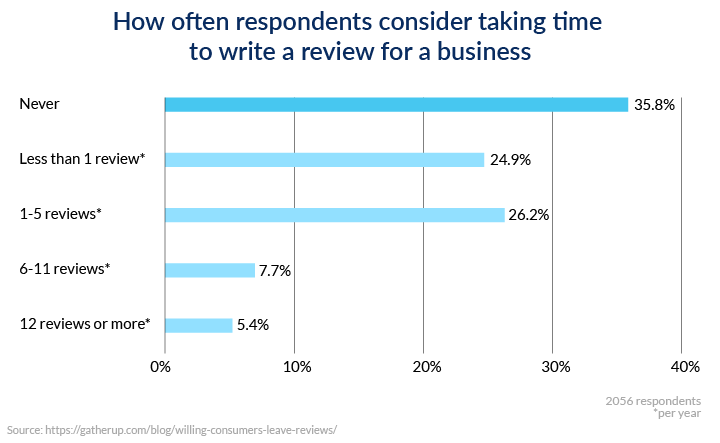You might have wondered how telehealth improves client retention, as finding new clients requires more time and effort than retaining existing ones.
According to general statistics provided by Hubspot, the probability of your regular clients returning to you varies from 60%-70%. On the other hand, only 5%-20% of those who haven’t used your services will convert into regular clients. These numbers show why client retention is very important to those who want to grow their therapy practice.
Let’s find out what client retention is and how we can improve it by using telehealth.
What is client retention?
Client retention is the metric that allows you to see how many clients continue using your services over a certain period of time. Customer retention rate (CRR) uses a formula that takes into account the following data:
- the number of existing patients you have at the start of the period you want to investigate (S)
- the number of new patients that weren’t using your services before (N)
- the number of patients you have at the end of the period (E)

Reportedly, there is generally only a 5% increase in retention for 25%-96% growth of profit. On the other hand, a drop in retention, often caused by marketing, communication, and technical issues, impacts business in a negative way.
Let’s check out which mistakes lead to reduced patient retention and find ways to avoid them in your practice by means of telehealth to improve the metrics.
1. Finding your target audience
Defining your target audience is the first thing you should do when creating paid campaigns or promoting your services via social media. Before beginning, ask yourself who your regular patients are, what their needs are, and how your services or content can assist them. Try to describe your services, emphasizing the value you can bring to your patients. Also, make sure to learn which client most benefits from telehealth.
You can use the following questions matrix to ensure your audience is defined correctly.

Remember, it is poor practice to use the same marketing ads for different audiences, especially if your audience is narrow and you have already reached them with the offer. People quickly dismiss information they have already seen, so repetitive ads will only waste your resources.
Instead, you can use sequential retargeting, an advertising technique that engages your website visitors after they leave your web page. These advertisements are set in a certain order to lead prospects to a particular decision or action.
Let’s take a look at other mistakes that therapists often make when creating ads aimed for increasing retention:
- “Pushy” ads. Don’t try to sell your sessions directly. Try offering returning website visitors a free session, a new service that fits their interests, or a discount. Encourage your patients to stay in touch with you by bringing more value into your ad copies.
- Choosing the wrong platform. Ensure you use a platform that allows you to separate newcomers from existing visitors so you can address the necessary audience.
- An inflexible advertising strategy. Failing to monitor the campaign results and adjust based on the interim data leads to poor ad performance. Avoid launching a campaign when you will be loaded with other tasks that won’t leave you time for quick analysis and adjustments.
- Measuring leads instead of bookings. This is one of the most common mistakes. Because your ultimate goal is to engage existing patients to book appointments with you, if you just measure leads, you miss your goal.
Make sure to avoid these common mistakes to make your ads work for your existing audience. This approach will eventually improve patient retention and benefit your business in the long run.
To collect data about your clients and get a clear understanding of your audience, you can use a CRM system that comes within different types of telehealth software. Here you’ll be able to get the necessary data — just make sure you use the quantitative approach and avoid referring to any patient identifiers.
2. Boost client engagement
Another mistake therapists often make is failing to engage with existing and former patients to build a professional relationship. No wonder it becomes hard to retain patients over time — the fact that they have used your services makes you stand out to them; however, if you don't reach out, their connection to your practice may wane. So, how telehealth improves client retention helping with engagement?
What is engagement and how does it impact retention?
Patient engagement can be characterized as the actions of an individual who repeatedly chooses to use the services offered to them by a certain healthcare provider or individual practitioner.
The research by Forbes implies that 90% of patients find engagement with their practitioner important for effective communication, making it an inseparable part of their expectations. Clients look for versatile touchpoints from multiple channels. Let's explore touchpoints further.
What is a touchpoint?
A touchpoint is an encounter in which the patient comes into contact with the therapist, learning about services and special offers as well as the practitioner, their methods, and the terms on which the services are provided.
You can use touchpoints like a chat, an email subscription, or social media channels to offer regular patients extra checklists and webinars on the topics you’re an expert in. This will show your patients you’re willing to go the extra mile for them, sending them a missed appointment follow up email, or asking their opinion on your services. All these tasks can be handled with a telehealth software that is aimed at building communication workflows.
Make sure to provide your patients with the means to leave feedback by using open-ended questions and encouraging the audience to share their opinion with you. This will build a two-way connection with them and increase the chances they’ll keep choosing you over your competitors.
Want to learn how you can boost patient engagement even further by making your content irresistible to your target audience? Check out 6 key elements of a highly converting psychology website
3. Build your personal brand
Branding is more important than most of us realize, within medicine and without, although most people outside the business community don’t use that term.
Some clinicians don’t know they have lower retention rates because of the lack of a personal brand. Certain challenges arise when you run your own practice, especially a telehealth-based practice, such as:
- little or no personal interaction with patients, so there are few engagement options
- reduced opportunities to educate patients about additional services you can provide
As a result, if you don't pay attention to branding, your services won’t stand out from the hundreds of similar offers from other specialists. This is one of the most frequent mistakes that can impact client retention.
Luckily you don’t have to be a professional marketer to promote yourself as a brand. Try sharing your expertise online and being yourself instead. Here are some tips that might assist you in building your brand on social media:
- Offer something of value that resonates with your patients’ needs. It shouldn’t necessarily be something that takes lots of effort — you can create podcasts or share useful resources or self-help checklists.
- Don’t be afraid to stand out. Personal branding is all about being different from your competitors in terms of services, offers, and approaches. Think of your differences as your secret weapon for winning over your regular and new patients.
- Do your research to understand your audience. After you’ve defined your target audience, explore their interests and ensure your social media and blog content benefits them.
These simple steps will help you strengthen retention rates. Additionally, you can use telehealth software to set up a branded experience for your patients, that will include a client portal and a branded booking appointment page, where everything is well-structured.
Want to know how to win over clients, marketing your private online practice? Use top 18 ways to attract clients to build successful marketing strategies based on your personal brand.
4. Consider market fit
Some therapists might think that if they copy the strategy of other practitioners, they’ll get the same results. However, such assumptions often lead to failure. Some niches are overheated and have too much competition for specialists who have only just started their online practice. On the other hand, if you choose to provide services that are not in demand, your appointment calendar will most likely stay empty.
To avoid this mistake, you have to validate your market fit.
Market fit is the extent to which the services you provide meet the demands of your patients.
Answer these questions to check if the services you provide fit the market:
- How long does it take for patients to decide to book an appointment?
- How frequently do your patients recommend you in their circles?
- How is your general retention rate compared to the retention rate of the industry?
- Has your retention rate been increasing or decreasing lately?
- How much engagement do you get as a result of your marketing efforts?
In the following picture you can see how a product or service is connected with the market: It is a two-way street where the services target underserved needs and add value to the market.

To improve patient retention, collect data to define the market fit for your practice. Feedback forms, questionnaires, or existing statistics for your industry will help you build hypotheses and test them. Most of telehealth software provides HIPAA-compliant intake forms you can use in your practice.
5. Ask for feedback
Being a therapist makes it difficult to ask for feedback, as it might lead to sensitive information disclosure. However, you should still ensure that you provide your patients with the means to leave feedback and offer the best possible experience.
Here’s some statistics provided by GatherUp: 35.8% of respondents replied that they won’t leave an online review regardless of their experience, followed closely by 24.9% of respondents that leave one review per year.

To get as much feedback as possible, you have to ensure that all your patients know there’s an option for leaving feedback and that they can do it anytime they want.

You can use a built-in secure review platform that offers anonymity to your patients, like ExperBox provides. You can automate the feedback process and give your patients the form right after or soon after the session to increase reply rates.
6. Fixing technical issues to boost retention
Even the most powerful marketing strategies won’t increase your retention if the platform you use has technical issues. Just like that, the lack of usability or poor video connection quality might ruin your hard-won reputation.
According to the J.D. Power U.S. Telehealth Satisfaction Study, over half of telehealth users state they encountered usability problems during telehealth consultations. In fact, 17% of respondents confess they had trouble understanding how to use the platform. It’s no surprise that if a patient has a poor experience with the technical solution, they may not use it again.
Let’s look at the most common technical mistakes that can be solved by using sufficient telehealth solutions.
Lack of coherent appointment tools
Let’s assume the first therapy session was successful and your patient is going to book another one. However, when your patient opens your booking calendar, they face the following problems:
- no free slots for their desired date and time
- limited availability because of working hours
- problems with understanding the functionality
- local time differences
- no rescheduling options
All of these factors have the potential to lead to appointment booking mistakes. For those wondering how telehealth improves client retention, it’s important to ensure your appointment booking teletherapy software is both easy to use and has all the necessary functionality. This might be the key to developing a patient-winning strategy.

Ideally, scheduling should be included in your telehealth platform and be easy to embed as a booking page into any other place so your booking process is sleeker.
2. Inconsistent workflow approach
Reduced retention is sometimes caused by an irregular workflow that doesn’t let specialists stay in control of their online therapy practice. An irregular workflow can give off an impression of inconsistency to patients.
Here are some of the most common telehealth problems and ways you can overcome them by implementing specific functionality and practices in your workflow.
| The problem | The solution |
|---|---|
|
No-shows
The patient might miss their session time for many reasons, from forgetting to reschedule it and being unable to be present at the booked time, to just plain forgetfulness.
|
Reminders
The booking appointment tool can assist you by sending your patients reminders before the session to ensure they remember the appointment and are ready for it.
|
|
Sensitive data issues
In a therapy practice, there is a risk your client’s sensitive data might be disclosed. Because of these breaches, patients might feel concerned about the security of telehealth solutions.
|
HIPAA compliance
Choose telehealth solutions that are compliant with the HIPAA standards, and use SSL encryption for protected communication. Also, ensure your patients have read the privacy policy and know their personal data is not used for any other purposes.
|
|
Onboarding difficulties
Some people feel uncomfortable when using telehealth solutions because they are not used to them. They might not be ready to pay for a full teletherapy consultation.
|
Providing free sessions
Therapists can deal with this concern by offering new patients a free introductory demo session to explain how everything works and alleviate possible stress.
|
|
Poor video quality
Poor video quality is often because of the Internet connection or the platform used for telehealth.
|
Choice of platform
If there is poor video quality, try changing the platform you use for teletherapy to improve patient retention.
|
Keep all the factors listed above in mind before buying any teletherapy solution. We recommend trying a teletherapy solution out and exploring its functionality as well as crash-testing its reliability before getting a subscription.
Looking for a HIPAA-compliant crash-proof teletherapy platform to help you maintain your workflow and overcome client retention issues? Start with ExpertBox for free!
Failing to provide a user-friendly experience
65% of clients agree that they will turn to a different service provider if they have a poor experience, making poor user experience one of the top reasons for decreased retention. In fact, the mistakes people make during telehealth appointments due to negative experience with the software are able to drive clients off.
User experience is a person's perceptions and responses that result from the use and/or anticipated use of a product, system, or service.
In other words, if the services you provide are negatively perceived by your patients, that is poor UX.

If any of these metrics drop, you will know you are dealing with a negative patient experience that might be caused by either your choice of telehealth platform or your workflow.
Want to know which platform features will empower your practice? Get to know the 12 key features to look for in teletherapy software to provide a top patient experience!
Final thoughts
For those wondering how telehealth improves client retention, it’s important to pay attention to the most common issues described above and implement the solutions. Make sure to follow our recommendations and closely monitor the effects to see how the changes you make impact your business’s success.
Want to be sure that the teletherapy solution you’ve chosen has the power to grow your retention, providing you and your patients with easier onboarding and smooth workflow? Try ExpertBox for free!
FAQ
-
There are 6 strategies in which telehealth can help you improve client retention:
- Finding target audience based on CRM data
- Boosting client engagement with communication tools
- Using a branded client portal to create tailored experience
- Considering market fir based on intake form submissions
- Asking for feedback using online forms
- Fixing technical issues to provide better client experience
-
Client retention is the metric that allows you to see how many clients keep using your services for a certain period of time. It compares the number of existing clients to the number of the clients that have used the services repeatedly during a certain period.
-
Avoid the following marketing mistakes to improve patient retention:
- incorrect target audience
- lack of client engagement
- absence of market fit
- undeveloped personal brand
- lack of feedback
-
There are 4 common technical mistakes that result in client retention:
- inconsistent workflow
- insufficient teletherapy platform
- poor booking appointment functionality
-
Ineffective communication is one of the major reasons for lower retention rates. When creating content or sharing anything with patients, make sure you:
- don’t use any personal information that shouldn’t be disclosed
- avoid in your content any coincidences with real people or yourself




